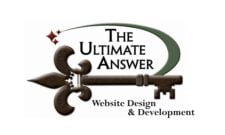
In today’s cluttered inbox, email newsletters are a double-edged sword. They offer a powerful way to connect (and stay connected) with your audience, nurture leads, and drive sales. However, bombard subscribers with too many emails, and you risk getting ignored or worse, unsubscribed. So, how often should you send your newsletter? The answer, like most things in marketing, is: it depends.
Here’s the good news: there are no hard and fast rules. But there are best practices you can follow to find the sweet spot for your business and audience. Think of yourself and how you might prefer to receive emails in your personal mail inbox.
Consider These Factors:
- Industry: The cadence for a fast-paced industry like fashion might differ from a more static industry like finance. Research what’s typical within your niche.
- Content Type: Weekly updates on industry trends might be expected, while in-depth analysis pieces could be sent less frequently.
- Audience Preferences: Many email marketing platforms allow subscribers to set their preferred frequency. Pay attention to these preferences!
Here are some general guidelines to get you started:
- Aim for Consistency: Whether it’s weekly, bi-weekly, or monthly, consistency is key. Subscribers appreciate knowing what to expect.
- Quality Over Quantity: Focus on delivering valuable, engaging content that your audience looks forward to receiving.
- Segment Your Audience: Tailor content and frequency based on subscriber interests and purchase history.
Beyond Frequency:
Remember, frequency is just one piece of the puzzle. Here are some additional tips for crafting a successful email newsletter:
- Compelling Subject Lines: Make your subject lines clear, concise, and intriguing to grab attention.
- Mobile-Friendly Design: Ensure your emails are optimized for mobile devices, where most emails are opened.
- Clear Call to Action: Tell your subscribers what you want them to do next, whether it’s visiting your website or making a purchase.
- Personalization: Use subscriber names and tailor content based on interests whenever possible.
For the Advanced Users: Testing is Key
Don’t be afraid to experiment! A/B testing different frequencies can help you understand what resonates best with your audience. Here are some A/B testing ideas:
- Frequency: Send the same email to two different subscriber segments, one at a weekly cadence and another at bi-weekly.
- Subject Lines: Test different subject lines for the same content to see which ones drive higher open rates.
- Send Time: Experiment with sending times to see when your audience is most likely to engage with your emails.
Key Factor With Emails:
One of the most important facts to remember about email and your customers is this. they signed up so most of these people are already interested in your service or product. You can use tags to further identify who is in your email group in order to provide more targeted information or sales. But remember to take care of all your email recipients, because they most likely already know you enough that they like you and want to stay connected. Let’s not irritate, bore or send repetitive emails that will make them unsubscribe.
The Takeaway:
Focus on building an engaging email list by offering valuable content, segmenting your audience with tags in your CRM account, and keep an eye on which types emails have been opened and when. Stats don’t have to be complicated to understand how many opened, and what day was best. By testing different days and times and continually reviewing your email strategy, you’ll find the sweet spot that keeps subscribers engaged and your business thriving.
